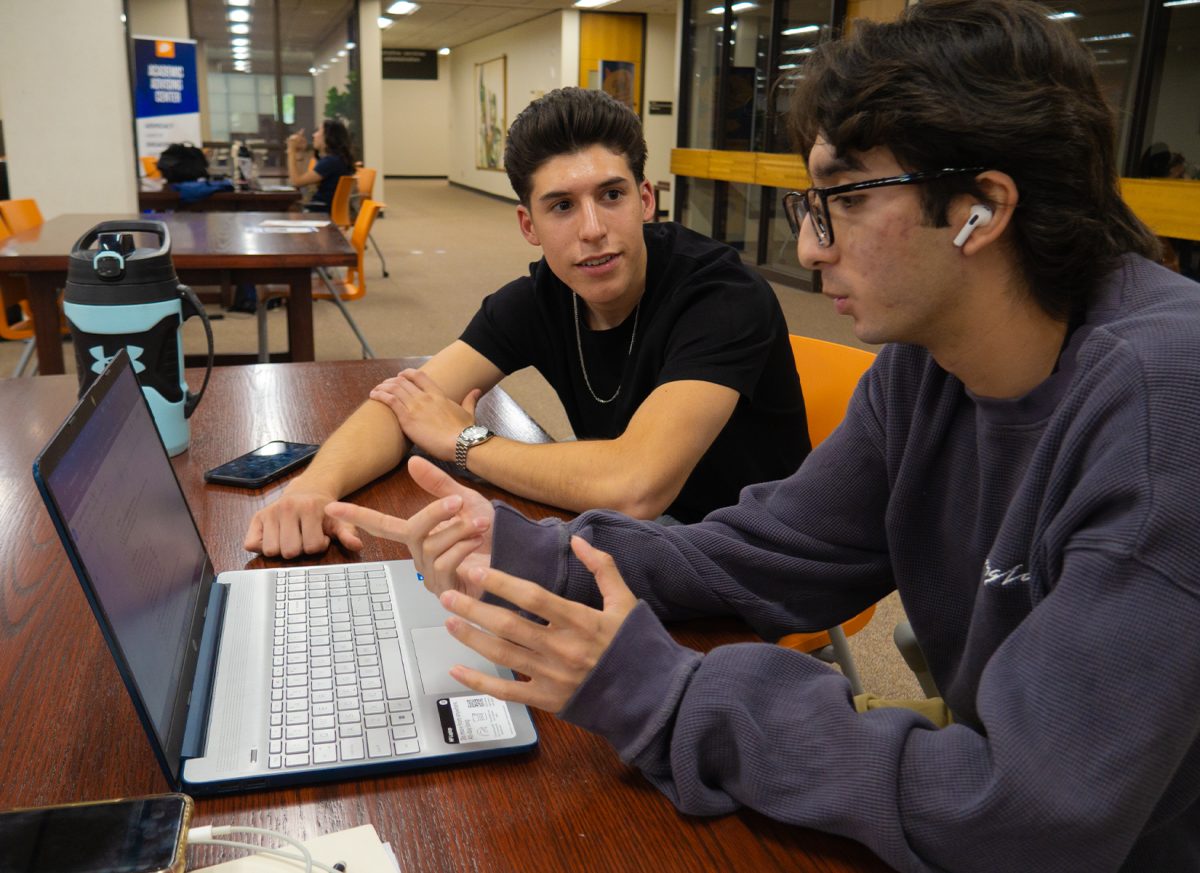It’s probably a fact—students walk into each building on campus without thinking about the history within the walls. The Cotton Memorial Building is among the many structures on campus that would tell a rich tale if it’s walls could speak.
Cotton is currently home to the KTEP radio station and the Department of Communication. It used to house fine arts. In 1881, Frank B. Cotton, the founder of the building, traveled from Boston to El Paso and purchased around 30,000 acres of ore-rich land. Before the time of his death, Cotton hired Walter B. Grant to protect his land. Grant then used Cotton’s land as a foundation to build a technical school for girls in the applied arts.
“These walls have a story to tell,” said Dennis Woo, production and operations director at the communication department and KTEP director. “Cotton has so much history, it’s sad to see many students don’t know what they’re walking into.”
It wasn’t until May 2014 that the department discovered a hidden plaque behind the extended bulletin board in the lobby. The plaque was dedicated to the building with Frank. B. Cotton and it was dated 1947. Since it’s discovery, the Cotton plaque has been on display for everyone to see walking into the building.
“I would have never guessed that was behind there all this time,” said Alberto Medina, a junior engineering major who has had a few classes inside the building. “Now I know every time I walk into Cotton, I won’t look at it the same.”
The Cotton Memorial Building was constructed in 1947 and opened its doors in the summer of 1948. During that time, art flourished and the fine arts department put on its first exhibit for the student body.
It wasn’t until 1970 that KTEP, formerly known as KVOF, found it’s home in the building and rocked the radio airwaves with student bands and music.
“There is a false roof here in Cotton. If you take out the paneling above the entrance, you can still see the original structure of the balcony that stood here before,” Woo said. “As for the upstairs, an auditorium stood in the place where all the classrooms lie now. It’s pretty interesting to see how far Cotton has gone. The building still maintains its original boiler and certain parts of its
wooden paneling.”
Cotton is near its 67th birthday. Students may not recognize it, but after a little history lesson, Cotton might gain some new fans.
“I believe other students should know the history of Cotton Memorial,” Medina said. “I can see it staying around here for another few more years, and if they were to decide it was time to tear it down, I would be against it. It’s like taking part of a cell in UTEP’s history away.”
As the decades pass, some of the other older buildings have been updated for modern times, such as Old Main, the first building on campus. As for Cotton, Woo envisions some kind of technological upgrade.
“Of course we want to keep the history, but at the same time we do have to keep up with the year. Eventually the Communication Department will install a flat screen in the lobby where students can watch CNN, daily news and other multimedia sources,” Woo said. “Cotton will not only keep its roots, but renovate to its basic needs to keep the students interested.”
For Woo, the building isn’t just another page in the story of the university, it’s been his home since the 1970s.
“I love to walk into this place and take one look at the plaque,” Woo said. “I feel honored to work in a place like this.”
Ashley Muñoz may be reached at [email protected].








